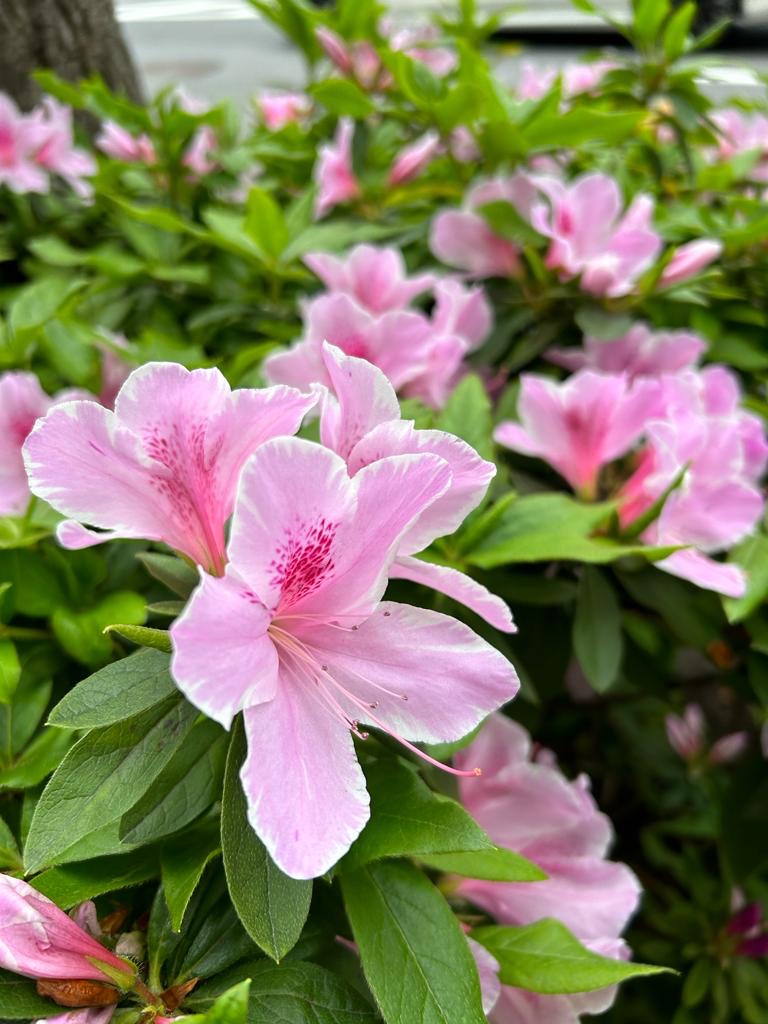When we hopped on the Meitetsu bus at Nagoya en route to Takayama, I didn’t really know what to expect. All I had planned in my to-do list were: visit the Hida No Sato (aka Hida Folk Village), get to see snow capped mountains, ride the bicycle and breathe in the fresh air. Takayama was, after all, our jumping point to exploring the Japan alps in the next days to come.
When we drove past the hustling city and into the countryside, my eyes feasted on the sights of clear streams and rivers, rice paddies, rolling hills of green. We passed through tunnels beneath mountains, and there were several sceneries that reminded me of the way to Sagada in Luzon. But this was hardly two hours away from Nagoya – what a treat for the city folks! In a few hours’ time they can reach these beautiful towns.
After a little more than three hours we finally reached the Takayama train station. Our hotel was just about ten minutes’ walk from the station, so as soon as we dropped off our luggage, we went to a nearby bike rental to check off one thing on my to-do list. I wiggled on my balance quite a few times as I tried to get used to my bicycle – it’s been a long time since I’ve ridden a Japanese bike – the last time was almost a decade ago in Kyoto. The guy told us it would take about 15 minutes to get to Hida No Sato (if we were to take the bus it’ll be about 10 minutes; and if we walked it would be about 40 minutes). He didn’t tell us it was uphill.
I’m not as fit like how I used to be when I travelled and biked. The uphill was quite a challenge, and several times D helped push my bike up. Although the temperature was only 24 degrees celsius, it didn’t help as I was sweating profusely (and sometimes imagining I was comfortably tucked in bed or soaking in a bath at the hotel). D must have been annoyed as he pretended he didn’t hear me when I called out “Are we there yet?” a couple of times.
And then we got there. Woohoo!! Parking fee was free for bikes. The entrance to Hida No Sato was 700¥ per adult. I found that it’s an open air musuem, and the houses that were displayed show the original houses of different parts of Hida. There was a lake and an outlook view of the peaks of the Japan Alps at the distance. 
There were several interactive activities near the lake and the entrance like origami, stamps, wooden cube puzzles, wooden stilts (which I saw no one succeed at), and a wooden water gun. Japanese-styled parasols were free to be used, as well as boots (maybe when it’s raining?).
Like the hotel we stayed at in Takayama, we took off our shoes as we entered the preserved homes. Because the Hida region is know for woodwork, the houses were wooden floors, tools and furniture. The homes have sunken hearths called irori which kept the surroundings warm.
There were also artisans who were demonstrating arts and crafts like Hida quilting, wood carving, and painting. If you walk in the Takayama town’s center, you will find a lot of wooden and hand crafted souvenirs.
 There were structures for different livelihoods. There was also a hall where the elders held meetings, and a shrine with a giant bell. There was a woodcutter’s hut, aand a logger’s hut. I also saw how the irrigation system used to be, and how rice fields were designed. The last stop that I went to was the resting area where vending machines for drinks were clustered together in. On the way there was a canopy of sweet smelling flowers – and the remarkable sound of bees.
There were structures for different livelihoods. There was also a hall where the elders held meetings, and a shrine with a giant bell. There was a woodcutter’s hut, aand a logger’s hut. I also saw how the irrigation system used to be, and how rice fields were designed. The last stop that I went to was the resting area where vending machines for drinks were clustered together in. On the way there was a canopy of sweet smelling flowers – and the remarkable sound of bees.
As I walked around the town I cannot help imagine how it was living in the past when there was no electricity. How did it feel during winter? I was fascinated at how the structures were built, the materials that were used. Life was indeed simpler back then, and how lucky the folks were as they woke up to the beautiful nature-filled surroundings, with the snow capped mountains a common sight in their backyards.

